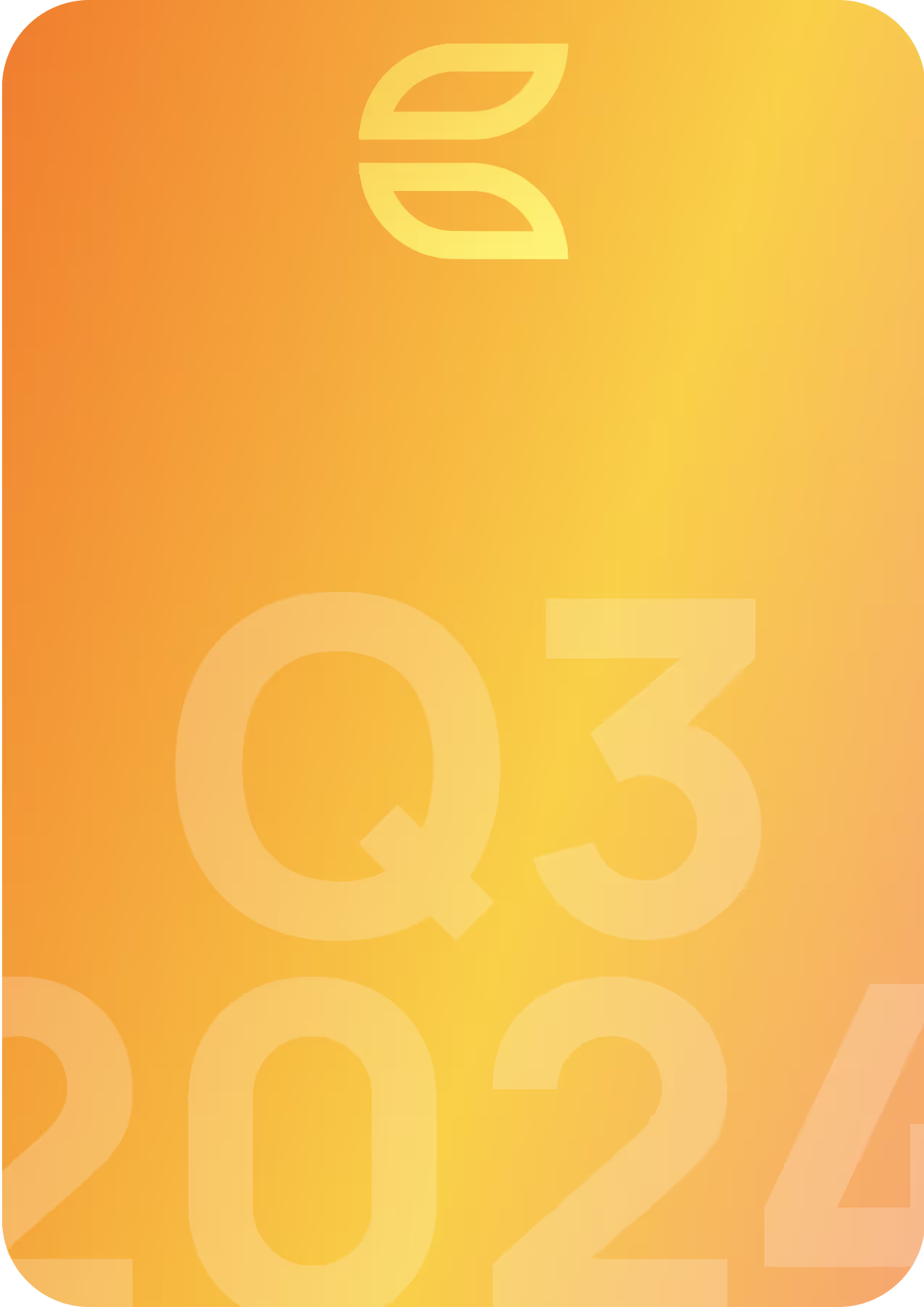
Exec Summary
H1 2024 has seen the Web3 hiring market pick up considerably, no doubt driven at least in part by the markets moving favourably, helped by the launch and approval of Bitcoin and Ethereum ETFs respectively.
Whilst we at Calyptus have increased our client base significantly, perhaps more interestingly, the number of jobs across all clients have shot up by 80% with well over 120 technical roles now on our platform.
We’ve seen salaries increase across the board and a huge rise in demand for candidates with specialised skill sets, such as protocol engineering.
Looking ahead, many new and growing startups are being funded and we expect the Web3 job market to continue expanding in H2 2024 with the political environment in the US being highly likely to have an impact.
Read on to get into the details and learn how you can best prepare your business for success.
Overview
In this report, we will explore the H1 2024 landscape of Web3 hiring based on the listings of over 250 tech job roles from Calyptus' 50+ hiring partners.
We'll delve into the top-paying positions, skills required and salaries shaping Web3. As well as segment the industry by geography, seniority and work preferences to gauge valuable insights for employers, hiring managers and tech professionals alike.
Salaries & Skills Required by Job Category
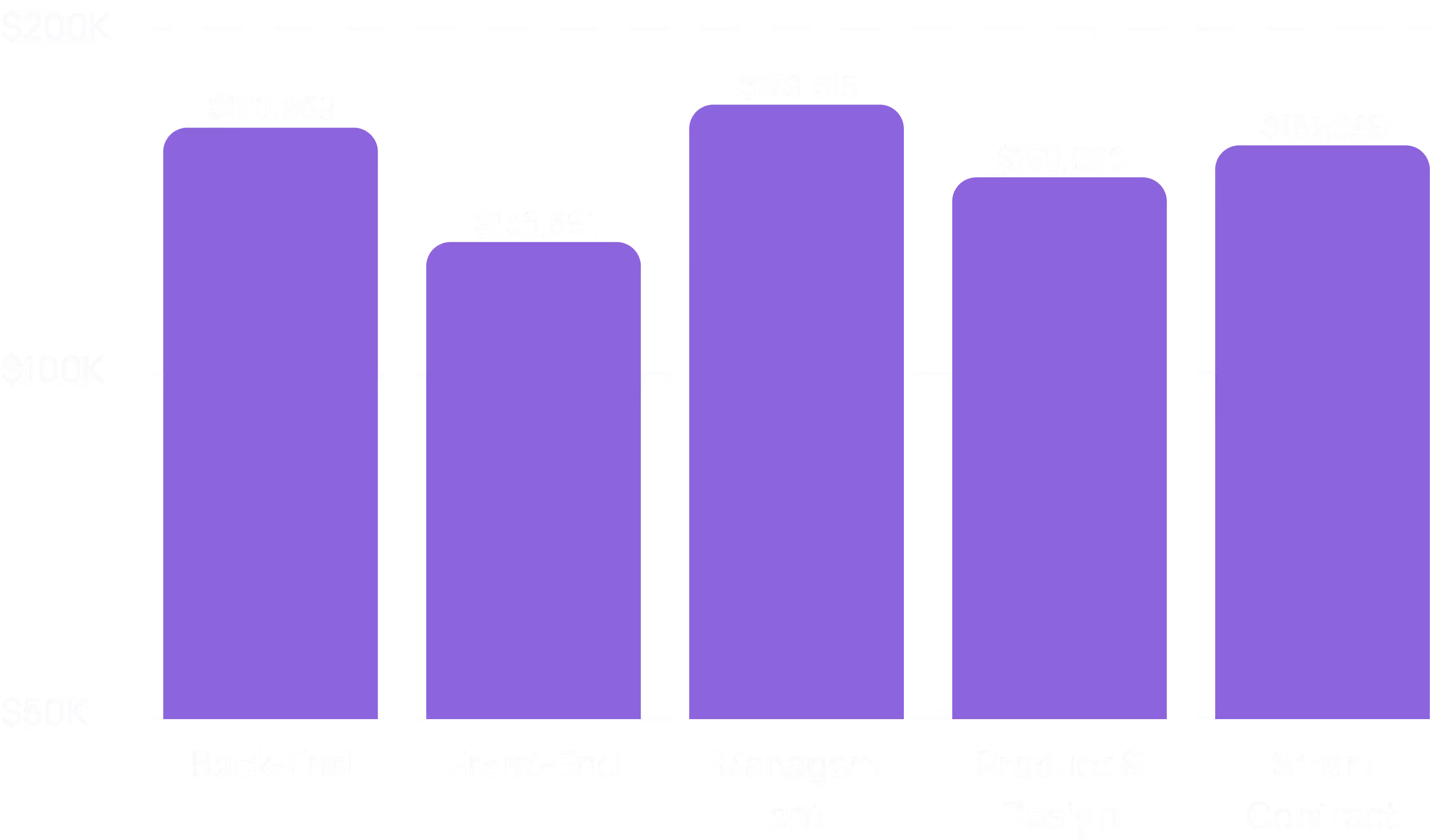
Rust, Systems, Golang, TypeScript, Kubernetes, Distributed Systems, Docker, Blockchain, Python.
Backend Developers are highly valued for their expertise in managing the core infrastructure of applications, particularly within the web3 and blockchain space. Mastery in Rust, Golang, and Kubernetes is particularly sought after, reflecting the industry’s emphasis on robust and efficient back-end solutions.
The broad salary range from $60K to $310K, with most earning between $140K and $200K, highlights the critical nature of their skills in building scalable, reliable, and secure backend systems.
React, TypeScript, Next.js, Crypto, Subgraphs, Tailwind, GraphQL.
Frontend Developers are essential for creating user-friendly and visually appealing interfaces.
With an average salary of approximately $140K and most earning between $105K and $172.5K, there’s a significant demand for proficiency in modern front-end frameworks like React and TypeScript.
Leadership, Crypto, React, TypeScript, Python, Technical Project Management.
The essential skills include leadership and project management, with a technical understanding of frameworks like React and TypeScript being beneficial. This indicates a need for managers who can effectively oversee technical teams and projects within the blockchain domain.
Management roles command a high average salary of around $180K, with a wide range reflecting the varying levels of responsibility and experience required.
Product Management, Design, React, TypeScript, User Experience.
Product management and design expertise are key, with additional value placed on technical skills in React and TypeScript, underscoring the integration of design and development.
Professionals in Product & Design are pivotal in aligning user experience with technical capabilities, earning an average salary of around $158.6K. The majority fall between $125K and $187.5K, emphasizing the blend of creative and technical skills needed.
Solidity, Rust, Open-source Contributions, EVM, DeFi.
The growing emphasis on Open-source Contributions, EVM, and DeFi reflects the critical role these developers play in the security and functionality of blockchain applications.
Smart Contract Developers experienced a salary increase from $160,814 to $167,849.
H1 2024 vs H2 2023 Comparison:
saw a significant jump in average salary from $126,568 to $170,968. The skill set required has expanded to include Kubernetes and Docker, alongside Rust and TypeScript, underscoring the growing complexity and importance of robust, scalable backend systems in the Web3 space.
average salary rose from $120,833 to $139,891. The demand for skills like Next.js, web3 libraries, and GraphQL has increased, highlighting the evolving landscape of front-end development and the integration of modern frameworks and blockchain technology.
saw an increase in average salary from $169,125 to $179,615. The required skill set now includes Crypto and Technical Project Management, in addition to traditional leadership skills. This trend indicates a rising need for managers who can navigate both technical and strategic aspects of projects within the blockchain domain.
experienced a salary increase from $160,814 to $167,849. The growing emphasis on Open-source Contributions, EVM, and DeFi reflects the critical role these developers play in the security and functionality of blockchain applications.
Salary Range by Job Position
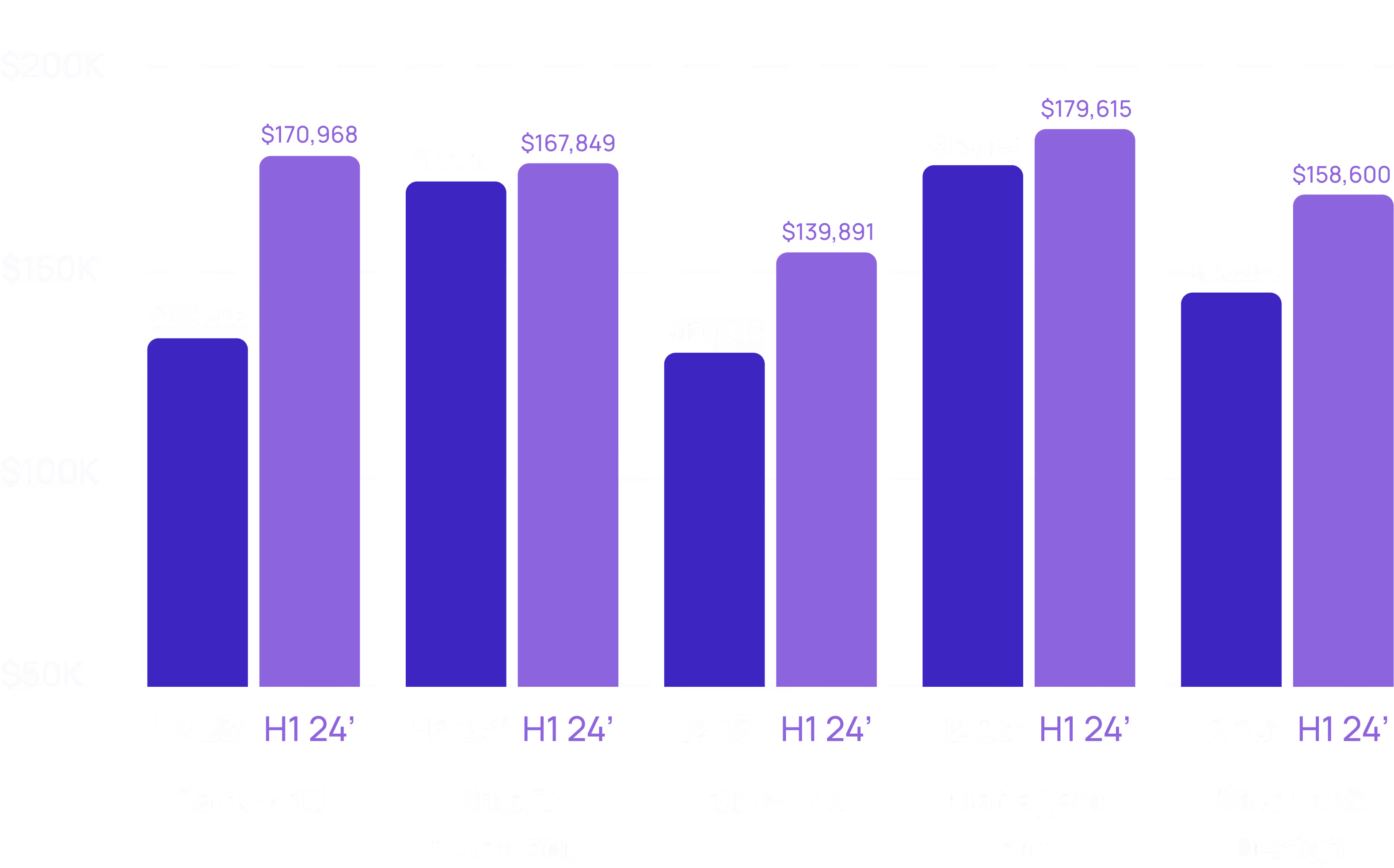
Highest Salaries Across Web3 Roles
Insights:
Most high-paying jobs are remote, indicating a strong trend towards flexible work environments in the Web3 industry.
There is a notable salary disparity between junior/mid-level positions and senior roles, emphasizing the premium placed on experience and specialized skills.
Roles requiring expertise in niche blockchain technologies, such as Rust, MOVE language, and Solidity, command the highest salaries.
Lowest Salaries Across Web3 Roles
Work Environment Distribution
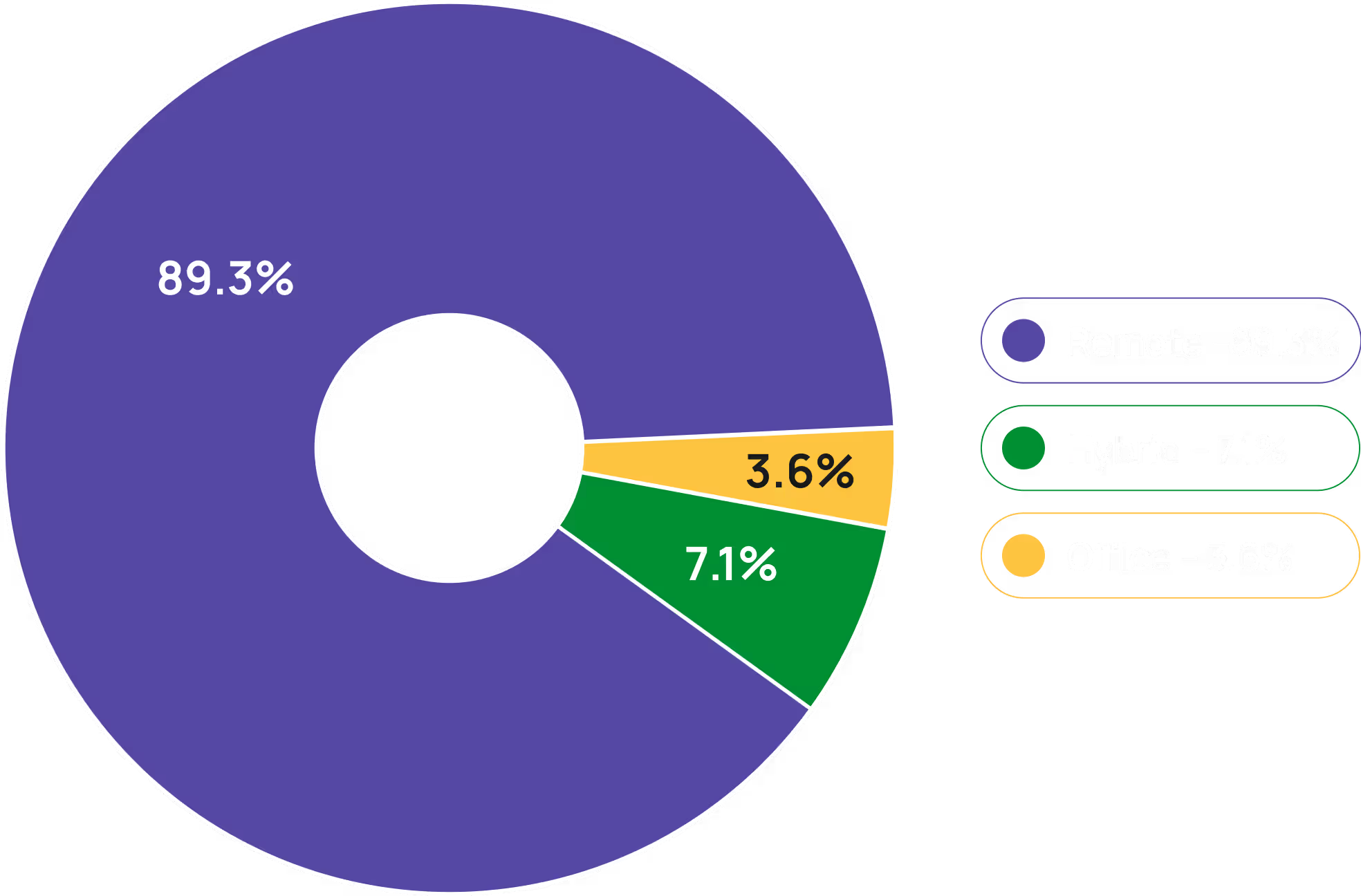
With approximately 89.3% of positions being remote, it is clear that the Web3 sector prioritizes flexibility. This trend highlights the industry's adaptability and the global nature of blockchain and decentralized projects, which inherently support remote collaboration and distributed teams.
Hybrid roles account for 7.1% of positions within the Web3 space, indicating a significant shift towards flexible work arrangements. Companies are increasingly valuing hybrid roles for their ability to combine the benefits of in-office collaboration with the flexibility of remote work. This setup not only helps in attracting talent that prefers a balance between home and office work but also aligns with modern work preferences and technological advancements.
Traditional office roles constitute only 3.6% of positions within the Web3 space, suggesting a notable move away from conventional office-based work setups. The low percentage of office roles highlights the challenges of maintaining a purely office-based setup, such as limited access to a diverse talent pool. However, office roles can still be essential for specific functions that require in-person collaboration and access to infrastructure.
Implications:
The high prevalence of remote roles opens up vast opportunities for professionals globally. Individuals can work for leading companies in the Web3 space without the need to relocate, allowing for a better work-life balance and more diverse job options.
Emphasizing remote work can significantly enhance the appeal of job postings. By offering remote positions, recruiters can tap into a wider and more diverse pool of candidates, including highly skilled professionals who might not be willing or able to work on-site.
H1 2024 vs H2 2023 Comparison:
In H2 2023, remote work was already a dominant trend, with 78.3% of jobs being remote. This trend illustrated the industry’s digital and decentralized nature, allowing professionals to work from anywhere without geographical constraints. By H1 2024, the preference for remote work grew even stronger, with 89.3% of positions being remote. This increase further underscores the Web3 sector’s commitment to flexibility and its ability to support distributed teams through advanced digital collaboration tools.
which accounted for 16% of the job market in H2 2023, provided a balanced approach that combined office and remote work. This model catered to those who valued face-to-face collaboration while retaining some degree of flexibility. However, by H1 2024, the proportion of hybrid roles decreased to 7.1%. This reduction suggests a shift towards more definitive work arrangements, with companies perhaps finding greater efficiency and satisfaction in fully remote setups.
saw a slight decrease from 5.7% in H2 2023 to 3.6% in H1 2024. While these roles remain a small segment of the market, their continued presence indicates that certain companies and roles still find value in traditional work environments, likely in regions with a high density of tech companies or where specific operational needs to necessitate in-person collaboration.
Overall, the trends from H2 2023 to H1 2024 show a clear acceleration towards remote work, highlighting the Web3 industry’s adaptability and preference for flexible work arrangements. This shift provides significant advantages in accessing a global talent pool and maintaining a decentralized workforce capable of thriving in a digital-first environment.
Seniority Distribution
Insights and Analysis:
With over half of the roles being senior positions, it is evident that the Web3 industry places a high premium on experience and advanced skills. Senior roles, constituting 52.3% of the positions, typically demand extensive knowledge and expertise in specialized areas, particularly in blockchain technology, decentralized finance (DeFi), and advanced programming languages.
Mid-level positions account for 44.7% of the job market, indicating strong opportunities for professionals with several years of experience. These roles often require a solid understanding of core Web3 technologies and the ability to contribute significantly to projects and teams, offering a pathway for career progression within the industry.
Junior positions are relatively scarce, making up only 3% of the roles. This scarcity suggests that entry-level opportunities in Web3 might be limited, potentially due to the highly specialized and technical nature of the industry, which demands substantial foundational knowledge even at the entry level.
Overall, the trends from H2 2023 to H1 2024 show a clear acceleration towards remote work, highlighting the Web3 industry’s adaptability and preference for flexible work arrangements. This shift provides significant advantages in accessing a global talent pool and maintaining a decentralized workforce capable of thriving in a digital-first environment.
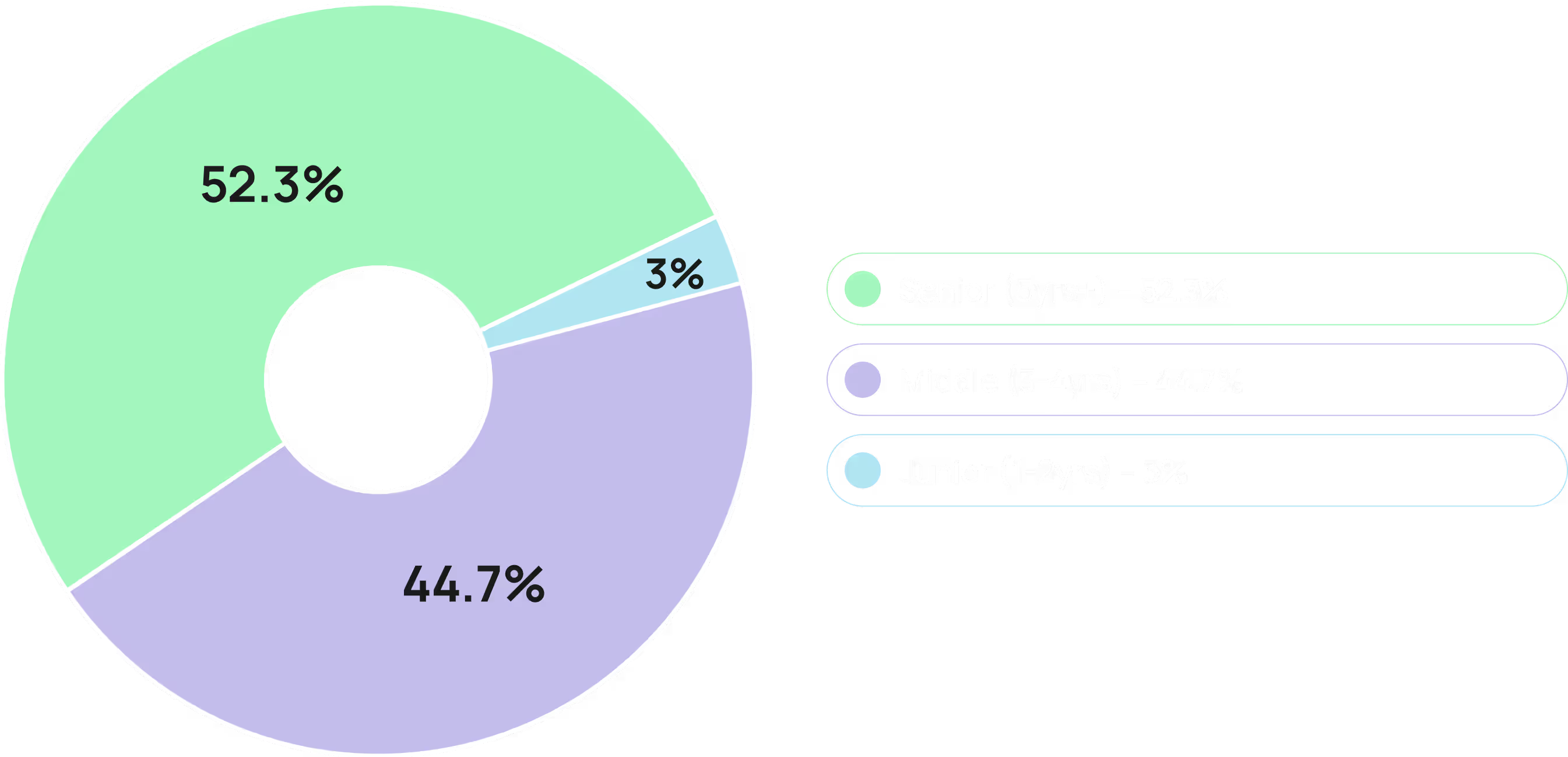
Implications
Professionals with extensive experience and specialized skills have abundant opportunities in the Web3 sector, particularly for senior roles. Mid-level professionals also enjoy strong prospects, while junior candidates may need to focus on building foundational skills and gaining experience to compete effectively in the job market.
The high demand for senior talent emphasizes the importance of offering competitive compensation and benefits to attract top-tier candidates. Additionally, creating more entry-level roles or internships could help cultivate a pipeline of future talent, ensuring a steady supply of skilled professionals as the industry grows.
H1 2024 vs H2 2023 Comparison:
In H2 2023, dominated the job market, accounting for 59.4% of all positions. By H1 2024, the proportion of senior roles slightly decreased to 52.3%, indicating a slight shift towards a more balanced distribution but still highlighting the continued high demand for senior expertise.
saw a notable increase. In H2 2023, mid-level roles comprised 32% of the job market. By H1 2024, mid-level roles grew to 44.7%, suggesting that companies are increasingly valuing professionals who can bridge the gap between junior staff and senior management, providing both stability and growth potential within teams.
however, saw a significant reduction. In H2 2023, 8.6% of roles were designated for junior-level applicants, already reflecting a competitive landscape for newcomers. By H1 2024, this figure dropped to just 3.0%, further emphasizing the competitive nature of entry-level positions in the Web3 industry.
Overall, the seniority distribution trends from H2 2023 to H1 2024 reflect an industry that still heavily relies on experienced professionals but is also increasingly valuing mid-level talent capable of taking on significant responsibilities. The decrease in entry-level positions highlights the competitive edge required to break into the Web3 space, urging aspiring professionals to enhance their skills and professional networks to secure these coveted roles.
Geographical Salaries & Job Distribution
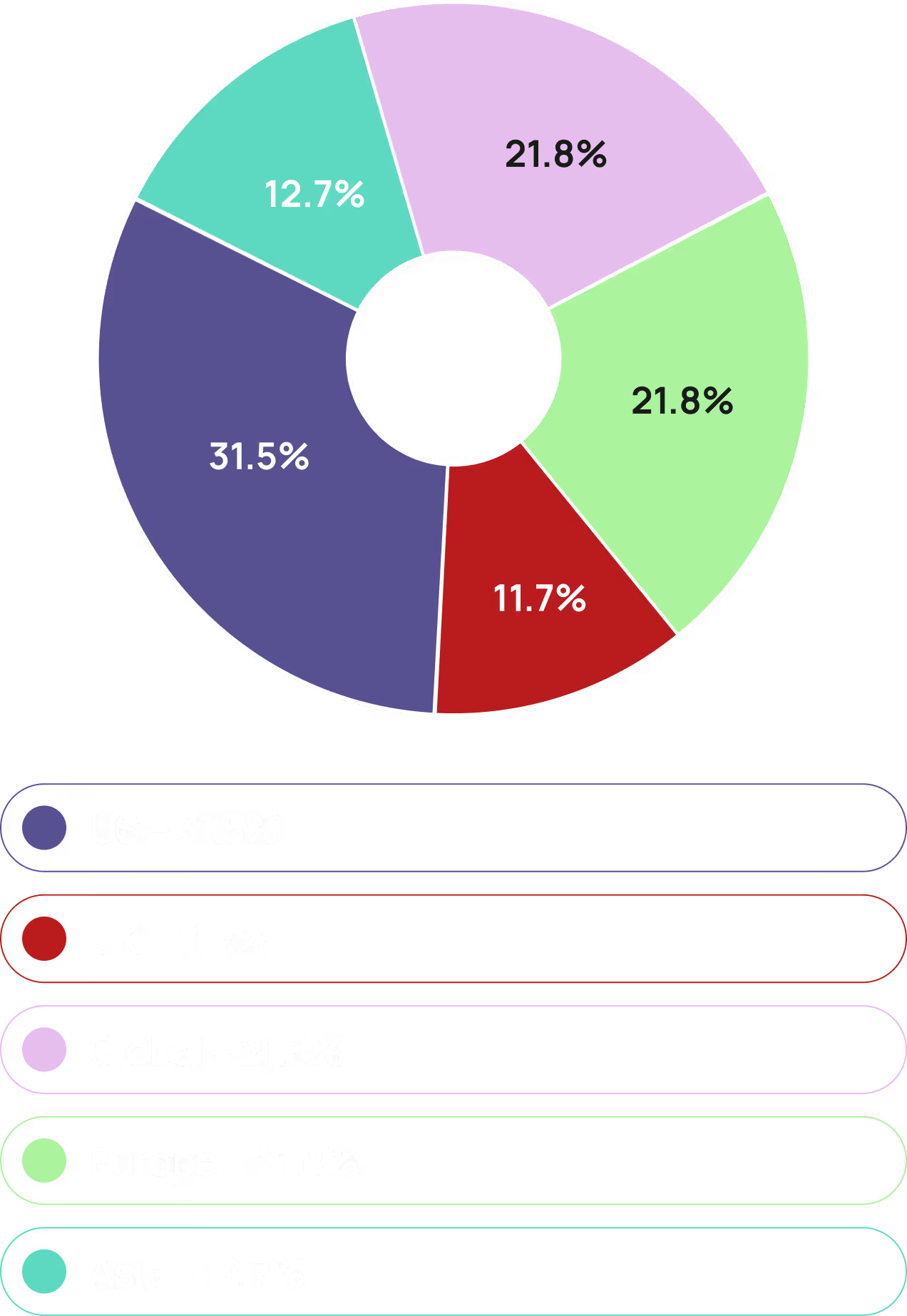

Average Salary: $186,048, with a range from $100K to $300K.
The US dominates as the most flexible location, with 31.5% of all Web3 roles open to candidates based in the United States. This reflects the strong presence and influence of the US in the tech and blockchain sectors, offering numerous opportunities for professionals in this region to engage in cutting-edge projects and innovative companies.
The average salary for US-based roles is $186,048, with most salaries ranging from $170K to $200K. This reflects the strong demand for Web3 professionals in the US, a major hub for tech and blockchain innovation. The upper end of the salary range reaches $300K, indicating lucrative opportunities for highly skilled professionals.
Average Salary: $134,477, with a range from $62.5K to $250K.
The EU represents a significant portion of the Web3 job market, with 21.8% of positions open to candidates from this region. This broad access highlights the EU’s growing importance and active participation in the blockchain and decentralized technology landscape, providing substantial opportunities for European professionals.
The average salary in the EU is $134,477, with most salaries between $100K and $165K. The salary range extends from $62.5K to $250K, reflecting the diverse economic landscape of the EU and the varying levels of demand for Web3 talent across different countries.
Average Salary: $120,300, with a range from $60K to $200K.
Asia-based candidates have access to 12.7% of Web3 roles, reflecting the region’s growing involvement in blockchain technologies. This presence indicates a burgeoning interest and expanding opportunities for Asian professionals to contribute to and benefit from the global Web3 ecosystem.
The majority of salaries fall between $100K and $140K, demonstrating the region’s rapid advancement in the Web3 sector. The salary range extends from $60K to $200K, highlighting the diverse and expanding opportunities. This indicates that Asia is steadily closing in on the EU, reflecting the increasing demand and development in the Web3 space across Asian countries.
Average Salary: $197,907, with a range from $85K to $310K.
Positions open to global candidates also account for 21.8%, underscoring the Web3 industry’s inclusive and global nature. This flexibility allows professionals from any part of the world to participate in the industry, promoting a diverse and dynamic workforce that can drive innovation and growth across borders.
Global roles offer the highest average salary at $197,907, with a wide range extending from $85K to $310K. The majority of salaries fall between $180K and $225K, indicating that positions open to candidates from any location are highly competitive and tend to offer higher compensation to attract top talent from around the world.
Average Salary: $158,696, with a range from $100K to $225K.
The UK, with 11.7% of positions open to its professionals, maintains a notable presence in the Web3 job market. This indicates that despite being smaller in comparison to other regions, the UK continues to be an important player in the blockchain sector, offering opportunities for its professionals to engage with leading Web3 companies.
UK-based roles offer an average salary of $158,696, with the majority falling between $135K and $180K. The salary range spans from $100K to $225K, showcasing the UK's active participation in the Web3 sector and the competitive compensation offered to attract skilled professionals.
Implications
- Global Flexibility: Consider remote roles that offer high average salaries and allow work from any location.
- US-Based Opportunities: Focus on US roles for competitive pay and career growth in a major tech hub.
- Regional Specialization: Tailor skills to regional demands to maximize earning potential in the UK and EU.
- Skill Development in Asia: Build specialized skills to compete for higher-paying roles and explore global remote opportunities.
- Attracting Global Talent: Offer competitive salaries and remote flexibility to attract diverse, top-tier talent.
- Competitive Salaries in the US: Ensure compensation packages are attractive to retain US-based talent.
- Tailored Recruitment Strategies: Adjust strategies to regional salary trends to attract the right candidates.
- Building Talent Pipelines in Asia: Invest in high-potential candidates early to develop a skilled workforce.
H1 2024 vs H2 2023 Comparison:
held a slight edge with 25.7% of Web3 jobs, highlighting its status as a key hub for tech innovation and a thriving startup ecosystem. By H1 2024, the proportion of jobs allowing US-based candidates increased to 31.5%, indicating an even stronger demand for Web3 professionals in the US.
accounted for 24.6% of jobs in H2 2023, offering borderless opportunities that align with the decentralized ethos of the Web3 space. In H1 2024, 21.8% of jobs were open to candidates globally, maintaining substantial borderless opportunities but with a slight decrease, possibly due to regional hiring preferences.
made up 24% of the Web3 job market in H2 2023, supported by the EU's collaborative stance on innovation. By H1 2024, jobs open to EU-based candidates slightly decreased to 21.8%, suggesting a more competitive environment or shifting regional focuses.
with 14.9% of Web3 jobs in H2 2023, leveraged its strategic position as a financial and tech hub. However, by H1 2024, the proportion of jobs allowing UK-based candidates decreased to 11.7%, indicating a possible consolidation of roles or increased competition within the region.
accounted for 6.9% of Web3 jobs in H2 2023, indicating an emerging presence in the Web3 domain. By H1 2024, the proportion of jobs open to Asia-based candidates increased to 12.7%, reflecting growing interest and investment in Web3 technologies across the continent.

Summary
In conclusion, the Web3 sector is experiencing robust growth and increasing demand for specialized skills, leading to significant salary increases across various roles compared to H2 2023. Backend and frontend developers, smart contract developers, and management professionals are particularly sought after, with a strong emphasis on experience and niche technical expertise.
The dominance of remote work reflects the industry’s flexible, global nature, allowing professionals worldwide to engage in innovative projects. While senior and mid-level positions are prevalent, entry-level opportunities are limited, underscoring the need for substantial foundational knowledge even for beginners.
Geographical salary disparities highlight the competitive landscape and the importance of tailoring skills to regional demands. This dynamic environment offers abundant opportunities for skilled professionals and presents unique challenges for recruiters aiming to attract and retain top talent.
Disclaimer: This report is based on data collected exclusively through the Calyptus platform and represents our findings for H1 2024. It is intended for informational purposes only and may not reflect wider market trends or align with data from other sources. We advise readers to consider this context when interpreting our report. Our analysis should be used as one of several tools in understanding the evolving landscape of Web3 hiring, roles and salaries.
Get your free report
Share your details and get last quarter's breakdown from average tech salaries to workplace preferences in Web3.






